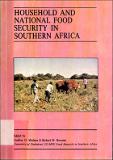| dc.description.abstract | Swaziland is a small, landlocked country bordering the Republic of South Africa in the north, west and south, and Mozambique in the east. The country has four distinctive ecological zones, ranging for the wet highveld in the west with an elevation of over 2,000 metres to the dry lowveld in the east, with an average altitude of 100 metres. The population is currently about 676,000, growing at a high rate of 3.2% annually.
Agriculture is the main economic activity, providing a livelihood for more than 50,000 rural homesteads and serving as the basis for agro industries. The striking characteristic of the rural economy is the division of land, where freehold tenure in the form of Title Deed Land (TDL) and communal tenure on Swazi Nation Land (SNL) exist side by side. The latter, about 60% of the total land, is held by the King in trust for the Swazi Nation, and provides a living for some 80% of the total population.
Some 850 farms and estates on TDL, with an average of about 800 ha, are technologically advanced, with about 60% of the arable land under irrigation. The main crops in this fully-commercialized sector are citrus fruits, sugarcane, cotton, and pineapples. By contrast, holdings on SNL which average less than 2 ha, employ a low level of technology and produce mainly maize. The contribution to the Gross Domestic Product (1981-1985) of crop production on TDL amounted to 14.6%; the contribution of SNL crop production was only 3.4% over the same period (Swaziland Government, 1988, p.6).
This paper deals with the contribution of irrigation to food security in Swaziland, defined in terms of both food availability and the ability to acquire food. Irrigation will thus be looked at in the light of food production, as well as providing employment to enable access to food. Finally, areas for further research will be identified. | en |


